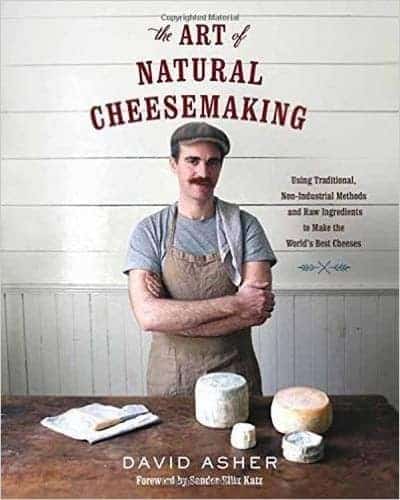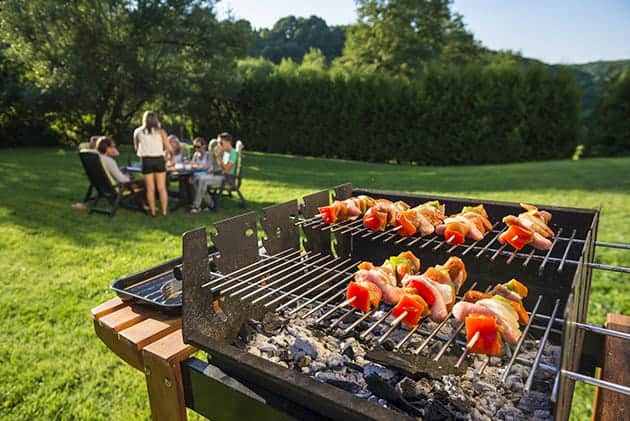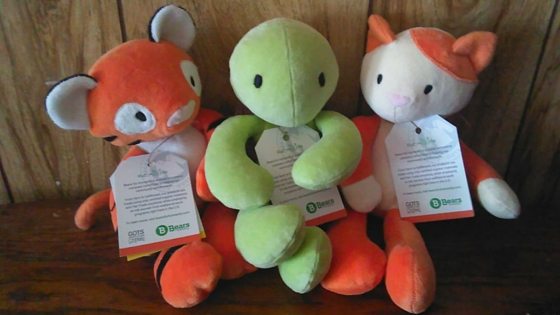There’s cheesemaking, then there’s sustainable, natural cheesemaking.
I’m guessing as a homesteader, that the latter is pretty appealing to you.
If sustainable living is your gig, then you’ll need to grab a copy of The Art Of Natural Cheesemaking by David Asher.
(Click here to purchase The Art Of Natural Cheesemaking By David Asher)
Product Description:
The Art Of Natural Cheesemaking by David Asher is a 320 page, soft bound book published by Chelsea Green Publishing.
The book contains 35 step-by-step recipes, along with many full-color photos, to teach you the art of natural cheesemaking. The recipes are the author’s own, from his Black Sheep School of Cheesemaking.
Included are recipes for perennial favorites, such as mozzarella, paneer, basic farmstead cheeses, and cheddar, as well as off-the-beaten-path ideas for more original cheeses.
The Good:
I received this book to review, and one of the things that stood out immediately was that the author, David Asher, suggests using fermented foods as a starter in several recipes—in most cases, he suggests using kefir.
I’ve been making cheese for years, and I had heard about using leftover whey to start the next batch of cheese, but I had not heard of using kefir to start a new batch of cheese.
(Of course, I’ve made cheese out of kefir itself, but using it to inoculate a batch of fresh milk to make different cheeses was new to me).
The idea of using kefir as a sustainable way to culture milk into cheese is something I was thrilled to learn about since I like to make fresh cheese, but sometimes struggle to pay for starters.
But kefir grains only need to be purchased once, and as long as they are fed correctly, they will last for a long time, if not forever. Perfect for someone wanting to make cheese frugally!
Since I don’t like drinking kefir too much, I try using it in other ways, and found that using it to make cheese is a perfect way to eat extra nutrients, too.
For centuries, the purpose of making cheese has been to preserve milk for times when it might not be readily available (when a dairy animal is pregnant and dry, for example).
So, making cheese to preserve some of the nutrients in kefir makes sense, too.
Loving the thought, I tested out natural cheesemaking using some of my own, homemade, kefir.
I tried just a regular farmstead cheese using whole cow milk.
Since I had never made cheese using kefir as the starter, I just wanted to give it a test drive, so I could see the results without going through a ton of steps, especially since kefir can be kind of sour.
I wasn’t sure if I would like the end result!
Using the directions in The Art Of Natural Cheesemaking, I tried Mr. Asher’s recipe for a simple farmstead cheese.
After warming the milk and adding the kefir and rennet, I’m happy to report that the curds separated from the whey very easily, while overnight, the kefir worked its magic.
In the morning, I had wonderful smelling curds that I was able to drain over a couple hours into an incredible-tasting cheese.
And I have to say, I love that my cheesemaking became more sustainable thanks to using kefir!
The Art Of Natural Cheesemaking also has several easy recipes that don’t involve kefir, and these recipes are also perfect for any beginner to try.
I tested out the paneer recipe, since I had yet to find one that worked well.
I thought David’s directions were easy to follow, and thoroughly explained each step, so I ended up with great-looking paneer that tasted great too!
I also tested the mozzarella recipe, since I’ve always struggled getting the curds to stretch.
The step-by-step process that Mr. Asher describes is easy to follow, and as a result, I was finally able to get a wonderful, smooth mozzarella.
The Bad:
While The Art Of Natural Cheesemaking is very easy to follow and the instructions are clear, if you’re very new to cheesemaking (meaning, you’ve never made cheese before, or you’ve tried and failed), or if you’re still trying to sort out the mysteries of cheesemaking, then this book might be a bit over your head.
In order to understand Mr. Asher’s methods and why they work, some basic understanding of how cheese is made and what happens when rennet or starter is added to heated milk is necessary to get the full benefit of The Art Of Natural Cheesemaking.
In addition, at times Mr. Asher doesn’t use precise quantities, or relies in quantities for a specific brand (for rennet for example), and for complete newbies, who need precise directions and might not have access to a certain brand, that can be confusing.
If you’re an experienced cheesemaker, however, this won’t necessarily apply to you.
The Bottom Line:
If you’re looking for a more sustainable way to create your own homemade cheese, you’ll love Mr. Asher’s book.
I believe The Art Of Natural Cheesemaking is a must-have for any cheesemaker’s shelf, and I recommend you get a copy as fast as possible.
You can purchase a copy of The Art Of Natural Cheesemaking on Amazon.
I’d like to hear from you!
Do you think you’ll try natural cheesemaking? Why or why not? Leave a comment below!
Maat van Uitert is a backyard chicken and sustainable living expert. She is also the author of Chickens: Naturally Raising A Sustainable Flock, which was a best seller in it’s Amazon category. Maat has been featured on NBC, CBS, AOL Finance, Community Chickens, the Huffington Post, Chickens magazine, Backyard Poultry, and Countryside Magazine. She lives on her farm in Southeast Missouri with her husband, two children, and about a million chickens and ducks. You can follow Maat on Facebook here and Instagram here.







